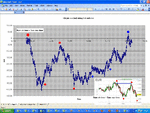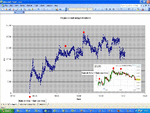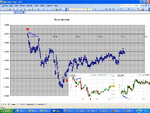Been a lot of debate on here in years gone by as to whether price updates in FX are a good proxy for actual traded volume, since there is no volume data available from one central exchange a la futures etc. A few prominent T2W'ers came out to openly say that tick volume was complete rubbish, and something that should be ignored.
http://mediaserver.fxstreet.com/Rep...4b6c/a72ee301-3076-48e6-b7ae-a13cb735fe3b.pdf
The research displayed in this article (taken from the current issue of FX Trader Magazine) would seem to suggest otherwise... anyone have any thoughts on the matter? Would be great if it were true as it would open up the possibility of using volume-based strategies and indicators within the FX markets.
http://mediaserver.fxstreet.com/Rep...4b6c/a72ee301-3076-48e6-b7ae-a13cb735fe3b.pdf
The research displayed in this article (taken from the current issue of FX Trader Magazine) would seem to suggest otherwise... anyone have any thoughts on the matter? Would be great if it were true as it would open up the possibility of using volume-based strategies and indicators within the FX markets.




